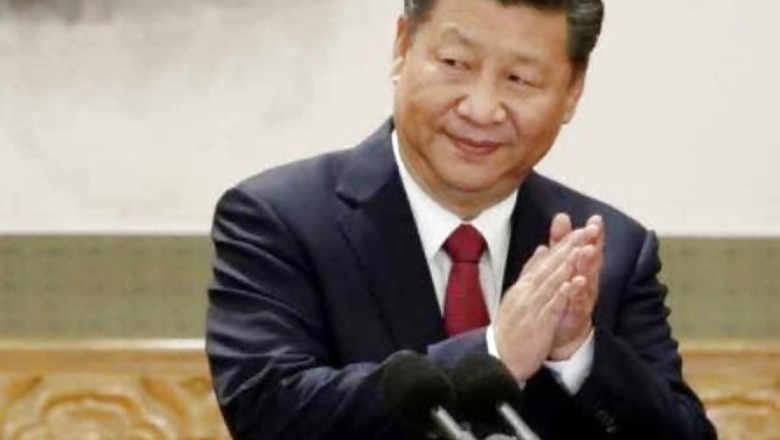
views
The ninth summit between China and the Central and Eastern European countries scheduled to be held in the first half of 2020 in Beijing, was postponed indefinitely in wake of the coronavirus pandemic. As the host country of this year’s 17+1 cooperation summit, China hopes to upgrade the economic cooperation and shaping the relations with the countries of the region. However, the CEE countries are increasingly dissatisfied with the outcome of their economic engagement with China and also having qualms about the 17+1 initiative. The reassessment of the cooperation is also consequential given the US-China tech rivalry.
With the establishment of the initiative in 2012, the CEE countries saw the cooperation with China as facilitating balanced development in Europe. China promised that the investments, trade cooperation and infrastructure development would give a new impetus to the growth of regional economies. But, few years into the framework, there is a growing discontent within the CEE countries given the slow progress in generating the desired economic results. Many Chinese investments and projects are still under discussions, delayed or cancelled raising doubts about the future of the 17+1 initiative. The CEE countries have become increasingly apprehensive about China’s role in the development of the region, with the pandemic only aggravating the rift.
Many Chinese investments and projects are still under discussions, delayed or cancelled raising doubts about the future of the 17+1 initiative.
17 + China
The 17+1 initiative is a China-led format founded in 2012 in Budapest with an aim to expand cooperation between Beijing and the CEE member countries, with investments and trade for the development of the CEE region. The framework also focuses on infrastructure projects such as bridges, motorways, railway lines and modernisation of ports in the member states. The initiative includes twelve EU member states and five Balkan states — Albania, Bosnia and Herzegovina, Bulgaria, Croatia, Czech Republic, Estonia, Greece, Hungary, Latvia, Lithuania, Macedonia, Montenegro, Poland, Romania, Serbia, Slovakia and Slovenia. The platform is largely seen as an extension of China’s flagship Belt and Road initiative (BRI).
China’s narrative towards the 17+1 initiative is about improving its relations with the European countries that are less developed as compared to the Western European states. Beijing was keen to construct an arrangement of interconnected relationship in the CEE region. China announced a $10 billion line of credit for investments in Central and Eastern Europe back in 2012. Trade relations between China and the CEE countries remained modest, leading to an increasing trade deficit since its inception.
China’s narrative towards the 17+1 initiative is about improving its relations with the European countries that are less developed as compared to the Western European states.
The dwindling framework
Initially, the investment promises made by Beijing to the region looked encouraging but over the years there has been huge imbalance among the CEE countries with regard to the announced credit. Chinese foreign direct investment to the Eastern European countries such as Austria, Bulgaria, the Czech Republic, Hungary, Poland, Romania and Slovakia was only 2% of the total investments in the region whereas the Western European countries received a larger share.
Indeed, many projects were proposed under the umbrella of the 17+1 initiative at various summits but only few have been completed till date. There is a sense of disappointment within the CEE countries regarding future engagement with China under the mechanism. For example, Romania’s active engagement with Beijing led to many proposed investments in the country under the 17+1 initiative, although none have been implemented as yet. Three major projects were signed in 2013, Cernavoda nuclear power plant, power plant in Rovinari and a hydropower plant, Tarnita-Lapustesti. The Cernavoda nuclear power plant project was estimated at $8 billion euros, but after nearly six years of negotiations, only a joint venture agreement was finalised and was also running behind schedule. In May 2020, the Romanian government asked the state company to terminate the negotiations with its Chinese counterpart and scout for new partners. The Rovinari thermal power plant project with the Chinese investment of $1 billion is yet to be implemented with the construction of new units. The Tarnita-Lapustesti hydropower plant project was put off after the fall of the Ponta government in 2015. The government is yet to launch the bidding process before the project gets started.
There is a sense of disappointment within the CEE countries regarding future engagement with China under the mechanism.
Similarly, the Budapest-Belgrade high speed railway line is a major infrastructure project for both Hungary and Serbia but the construction is yet to get underway. The delay has not augured well for the two countries and China as it was the flagship project of the 17+1 initiative. This is not to say, however, that there haven’t been some successes. The expansion of the Kostolac thermal power plant in Serbia, the Pupin Bridge, the Montenegro highway and the Port of Piraeus in Greece may help portray the Belt and Road initiative as a success in Europe but the lack of implementation of major projects in the CEE region has led to a rising trust deficit between Beijing and these countries.
The growing distance
Czech Republic President Milos Zeman’s decision to skip the ninth summit of the 17+1 initiative citing lack of actual investments, has showcased the differences between Beijing and Prague. Czech’s Senate speaker Milos Vystrcil’s trip to Taiwan last month to promote business links provoked the ire of Beijing with the Chinese Foreign Minister Wang Yi noting that the Senate speaker would pay a “heavy price” for his Taiwan visit. Vystrcil later stated that Czech Republic would not bow down to the objections raised by Beijing. Last year, the Prague city council cancelled a partnership agreement with Beijing after it decided not to remove an article questioning the ‘one China’ principle.
A virtual conference under the Belt and Road International Cooperation held in June 2020, saw the representation from Serbia, Hungary and Greece. The other members of the 17+1 initiative refused to attend the event, revealing the strained relations between Beijing and the CEE countries.
CEE parliamentarians and policymakers were also signatories to the statement against China’s introduction of the controversial national security law in Hong Kong.
In May 2020, the Latvian intelligence service, Constitution Protection Bureau in its annual report on national security, mentioned China as a cyber-threat to the NATO and the EU. In the same month, Lithuania asked the World Health Organisation to invite Taiwan to attend an assembly to discuss the global response to the pandemic. Taiwan’s participation was blocked by China but supported by the United States. The CEE parliamentarians and policymakers were also signatories to the statement against China’s introduction of the controversial national security law in Hong Kong. Estonia too is considering a reassessment of its inclusion in the 17+1 initiative citing China’s posture as a threat to Western values and grave violation of human rights against the Uighurs in China.
The Huawei equation
US Secretary of State Mike Pompeo’s recent visit to the CEE countries primarily focused on China’s 5G strategy in the region, as the telecommunications giant Huawei competes for the expansion of the 5G network in Central and Eastern Europe. The US-China tech rivalry has intensified lately as US classifies Huawei as a security threat. On his first stop in Prague, Pompeo urged the Czech government to reject the Chinese firm Huawei, noting that US could help in the development of the 5G network. Slovenia also signed a joint declaration with the US banning the unsafe players from the expansion of the network. The US strives for its allies in region to join its ‘Clean Network Program’ with respect to the cyber policy to safeguard the privacy and data that could compromise national security.
What was Beijing’s pivot to Europe is being met with skepticism about the future of the framework because of its slow results.
In a recent development, the Polish Ministry of Digital Affairs put out a draft bill that excludes the telecommunication vendors involved in the 5G network legally, which poses a potential threat to the cybersecurity of the country. In January, EU came out with a toolbox for the member states to identify the risks associated with the rollout of the 5G network and the measures that can be adopted in responding to the challenges.
Overall, it appears that China’s engagement with the CEE countries through the 17+1 initiative seems to be unravelling. What was Beijing’s pivot to Europe is being met with skepticism about the future of the framework because of its slow results. China’s maneuvers in the region are now increasingly being viewed as merely symbolic, with the pandemic only adding to its woes.
This article first appeared in ORF.


















Comments
0 comment